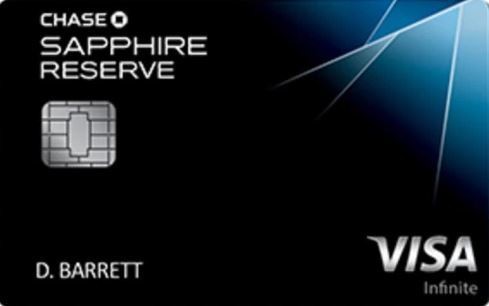September of Sapphire: How The New Chase Credit Card Became An Overnight Sensation
Ben Schlappig doesn’t have a home. He lives on planes and in hotel rooms. And he’s a big reason why Chase’s new credit card has generated unprecedented hysteria.

The credit card business is not where you go to get a brand fix. Most of the brands in this category tread water in the sea of sameness, inspiring little passion and much aggravation by inundating mailboxes with junk mail. And then there's the new Chase Sapphire Reserve:
- The card was so wildly popular that, upon launch, Chase ran through 12 months of metal stock in three weeks.
- Unboxing videos popped up all over YouTube, clocking tens of thousands of views (yes you read that right, the nail-biting action of a credit card reveal).
- Chase reported an unexpectedly large number of applications from millennials, a group that so far has been generally indifferent about card brands.
- Bloomberg Business Week put the new Chase Sapphire Reserve on its cover.
Here’s why this should have never happened:
- As an extension of the existing Sapphire franchise, there was a fairly docile product extension
- At a $450 annual fee, it severely limited relevance in a category awash with no-fee cards
- The card sweetened, but did not fundamentally alter the basic formula of perks and points. Nothing earth-shatteringly innovative here.
- Advertising and promotion leading up to the launch? Zero.
And here's why it did … Chase created the right conditions …
- Make perfect the enemy of good. Chase didn’t need to reinvent the wheel; they made the overall value proposition of the card just better enough than that of its competitors. The $300 vendor-agnostic travel credit was far more compelling than an airline-specific $200 credit from Amex platinum. The “plunk” factor of the metal card set it apart from the rest.
- Force consideration. Chase offered an eye-popping 100,000 point sign up bonus to drive consideration, induce trial, and even likely induce top-of-wallet behavior (as behavioral economists will tell you, once you’ve sprung for a $450 fee card, you’re going to find reasons to justify the cost). Time will tell if the folks at Chase nailed their acquisition cost break-even economics, but it is likely that the spending patterns of the retained users of this upmarket card will justify the investment.
… And Schlappig & Co. set the market on fire
Ben Schlappig runs an influential travel blog. Followers of his blog, One Mile At A Time, closely tracked the evolution of the card with the anticipation of expectant parents. Rumors about the card and what it might have to offer swirled around furiously at Ben's blog and at venues like ThePointsGuy and FlyerTalk, gathering steam as the suspense thickened. When the card was announced, the pent-up demand burst forth to make this the most talked-about credit card launch in recent times. Ongoing endorsement and advocacy ensured that the first rush of excitement did not fizzle out.

Two simple takeaways for CMOs:
- Nail the brand basics. For a brand to succeed, a CMO must create the structural conditions for success. This entails building the right set of features, functionality, access, promotions – the 4Ps of marketing, if you will. The best brands are ones that create lasting emotional attachments. But you don't have permission to talk emotions until you've got the experience and access right.
- Harness the power of the people. In the Age of the Customer, let the millions of finger tips perched upon keyboards do the marketing for you. It's much cheaper (often free) and way, way more credible. Spend at least as much time on thinking through how to leverage communities as you do on paid media strategies.
Keep on branding!
